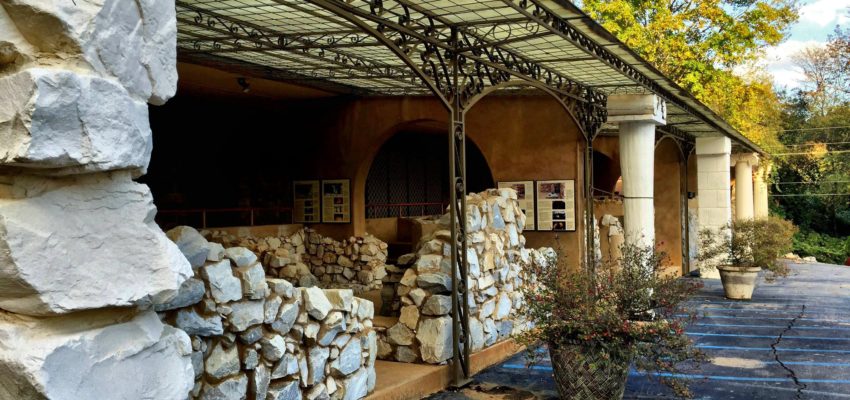There are self-explanatory signs posted on the arches, but arrangements can be made for a private production through the ruins of these four ancient houses of worship for a nominal fee. Please take time to look at the columns located in front of each worship center as they show the progression of architectural styles through the time periods covered. These styles were in use from 1500 BCE to 500 CE (a notation most archaeologists use to indicate “BC” and “AD” in their writings.
Canaanite Temple
Located between the stone-on-stone pillar from 2000 BCE and the tree-shaped trunk of the Minoan column from 1500 BCE, this “Broad House Temple” has a libation basin to appease the gods (powers) below and an altar for burnt offerings to appease the gods (powers) above.
Israelite Shrine
Located next to the pillar from 1000 BCE, this mud plaster replica from Tel Arad in Judea has a broad Holy Place and a small Holy of Holies reminiscent of the larger Jerusalem Temple. Within it are two “Stones of Remembrance” and two incense altars.
Jewish Synagogue
Located next to the Greek Ionic column from 500 BCE, there is a scroll cabinet and ritual bath with seven descending stairs. Synagogues of the First Century have 3-5 rows of stepped seating on either side.
Byzantine Church
The replica next to the Corinthian Roman column is of a Christian chapel from Shivata, in southern Israel. It features a central nave, two side aisles and a raised sanctuary featuring a stone altar, a mosaic replica from the “Loaves and Fishes Church,” an apse featuring a replica of a fresco from a Christian chapel in Beit-Shean, and a cross-shaped baptistery.
If you would like to have a guided production of the Time Tunnel, then you must make reservations.
If you would like to inquire about a guided tour, please fill out the comment form below. We will be in touch with you soon!
